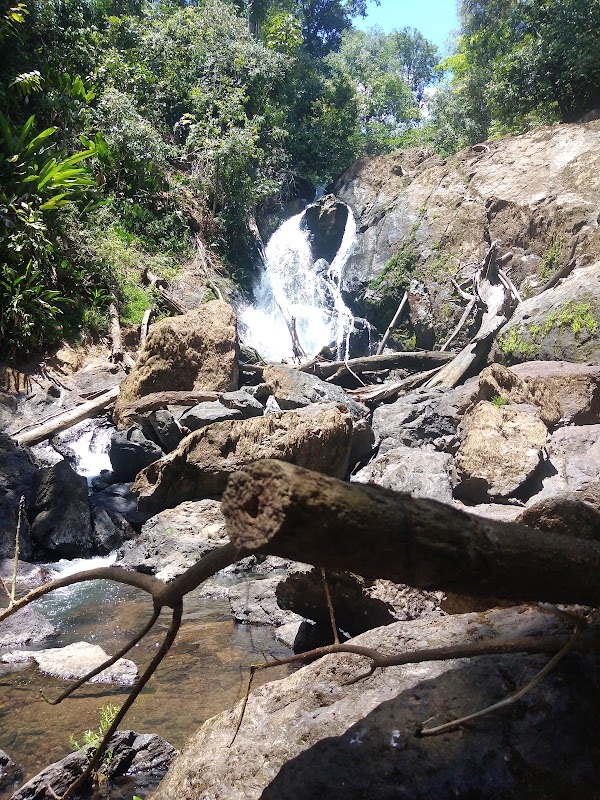Wildlife and Birdwatching Adventures on Osa Peninsula Near Puerto Jiménez
Experience the raw richness of Costa Rica’s Osa Peninsula, a hotspot for wildlife and birdwatching near Puerto Jiménez. From rainforest trails to coastal bird sanctuaries, this guide offers practical insights to prepare you for unforgettable adventures.
Start Early to Maximize Sightings
Wildlife activity peaks at dawn and early morning, so begin hikes early to catch the forest at its liveliest and avoid midday heat.
Wear Sturdy, Grippy Footwear
Trails can be muddy, rocky, and root-strewn; opt for hiking boots with reliable traction to maintain stability and prevent injury.
Hydrate and Pack Light
Humidity is high; carry at least 2 liters of water and pack only necessary items to keep your load manageable over uneven terrain.
Bring Binoculars and a Field Guide
Birds and elusive mammals require sharp eyes; binoculars will extend your view, and a local guidebook aids identification.
Wildlife and Birdwatching Adventures on Osa Peninsula Near Puerto Jiménez
The Osa Peninsula, just outside Puerto Jiménez, stands as one of Costa Rica's richest ecological frontiers. Here, the dense rainforest paints a living canvas where tapirs shuffle under towering trees, and scarlet macaws streak through the canopy. This adventure invites you onto trails carved along uneven terrain, across forest floors thick with leaf litter and over roots that reach like ancient hands. Distances vary, but most wildlife trails range from 2 to 6 kilometers, with elevation gains moderate yet steady, requiring good stamina and sure footing.
Start your journey early; the forests come alive at dawn as birds call out in chorus and monkeys chatter overhead. Trails wind through verdant thickets where rivers flirt with the jungle edges, daring you to cross or stay dry. Keep watch for the vibrant quetzals or orchids clinging to mossy branches, their colors popping against the deep greens. At the Corcovado National Park, often called the crown jewel of the peninsula, trails like the Sirena Station path offer up to 5km of forest walk, with some sections slippery and steep, demanding hiking shoes with firm grip.
For birdwatchers, the Cano Island Biological Reserve is an essential addition. Though boat access is required—a 30-minute ride from Puerto Jiménez—the reward is a rendezvous with over 300 bird species in varied coastal habitats. Watching frigatebirds soar like silent sentinels against the ocean skyline adds a different rhythm to the land-based experiences.
Preparation matters. Hydration is critical; tropical humidity can sap energy quickly. Dress in layers that breathe yet protect from thorny undergrowth and insects. Timing your trip to avoid midday heat balances comfort and chance of wildlife sightings. Don't underestimate the challenge—the Osa is a forest fiercely itself: alive, unpredictable, generous, and demanding respect.
After hours on the trail, the reward comes not just in wildlife glimpses but in the tactile sense of place: the quiet rustle of leaves, the sun piercing through the canopy in fragmented beams, and the primal pulse of a rainforest enduring beyond time. These explorations near Puerto Jiménez offer profound encounters with a wildness that plainly refuses to be tamed but can be known through attentive, deliberate step and eye.
Nearby Trips
All Adventures
Boat Charters
Water Activities
Adventures near Puerto Jiménez
Discover the unique and memorable adventures that make Puerto Jiménez special.
Frequently Asked Questions
Are guided tours necessary for wildlife and birdwatching in Osa?
While independent hiking is possible, guided tours greatly increase chances of wildlife sightings. Guides know the terrain, animal behaviors, and spotted trails where elusive species gather.
What wildlife can I expect to see near Puerto Jiménez?
Expect to encounter species such as scarlet macaws, toucans, howler monkeys, white-faced capuchins, agoutis, and the rare tapir. Early morning and late afternoon are best for animal activity.
How do I best prepare for wet weather during visits?
Carry waterproof gear, quick-drying clothes, and protect electronics in waterproof cases. Waterproof hiking boots or sandals are essential for slippery and flooded sections.
Are trails family-friendly or suitable for beginners?
Many trails are moderate and manageable for active families with older children. However, some routes through Corcovado can be steep or muddy, requiring caution and physical readiness.
What local conservation efforts support the Osa Peninsula’s wildlife?
Organizations such as the Osa Conservation Fund and local park authorities coordinate reforestation and wildlife monitoring. Visitors are encouraged to stick to trails to minimize human impact.
When is the best time to visit for bird photography?
Early mornings during the dry season offer clear light and increased bird activity. Seasonal migrants are common between December and March, providing diverse photographic subjects.
Recommended Gear
Hiking boots
Provide traction and ankle support crucial for wet, rocky, and root-covered trails.
Insect repellent
Mosquitoes and insects intensify during rainy months, so repellents protect against bites and insect-borne illnesses.
Lightweight rain jacket
Sudden tropical showers demand breathable waterproof layers that keep you dry without overheating.
Binoculars
Enhance birdwatching and scanning for distant wildlife within dense foliage.
Local Insights
Hidden Gems
- "La Sirena Ranger Station trails inside Corcovado for chance encounters with tapirs and giant anteaters"
- "Piedras Blancas National Park’s secluded river beaches for freshwater birdwatching"
- "Secret viewpoints overlooking Golfo Dulce where dolphins sometimes breach nearshore"
Wildlife
- "Resplendent quetzal—rare but visible in higher elevations"
- "Scarlet macaws—flashing red flocks often heard before seen"
- "Mangrove warblers and other coastal bird species near estuaries"
History
"The Osa Peninsula is home to indigenous Bribri communities whose stewardship has helped preserve much of the forest's biodiversity. The Corcovado area was declared a national park in 1975 to protect its unique ecosystems."

